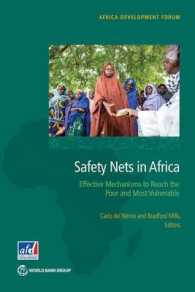- ホーム
- > 洋書
- > 英文書
- > Folklore / Mythology
基本説明
New in paperback. Hardcover was published in 1996.
Full Description
Between 1651 and 1740 hundreds of fables, fable collections, and biographies of the ancient Greek slave Aesop were published in England. In The English Fable, Jayne Elizabeth Lewis describes the national obsession with Aesop's fables during this period as both a figural response to sociopolitical crises, and an antidote to emerging anxieties about authorship. Lewis traces the role that fable collections, Augustan fable theory, and debates about the figure of Aesop played in the formation of a modern, literate, and self-consciously English culture, and shows how three Augustan writers - John Dryden, Anne Finch, and John Gay - experimented with the seemingly marginal symbolic form of fable to gain access to new centres of English culture. Often interpreted as a discourse of the dispossessed, the fable in fact offered Augustan writers access to a unique form of cultural authority.
Contents
Acknowledgments; Introduction: The English fable; 1. Aesopiean examples: the English fable collection and its authors, 1651-1740; 2. 'The first pieces of wit': Augustan fable theory and the birth of the book; 3. Common and uncommon characters: the lives of Aesop; 4. Brutal transactions, 'mysterious writ': Aesop's fables and Dryden's later poetry; 5. In her 'transparent Laberynth': obstructions of poetic justice in Anne Finch's fables; 6. Risking contradiction: John Gay's Fables and the matter of reading; 7. The moral; Notes; Bibliography; Index.






